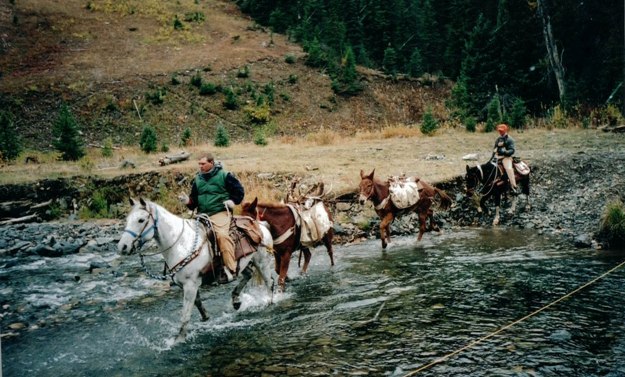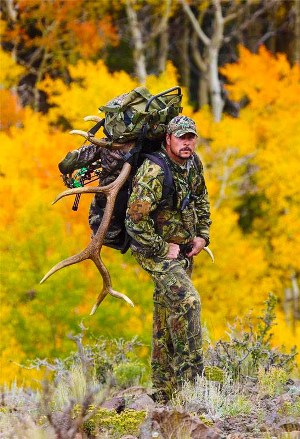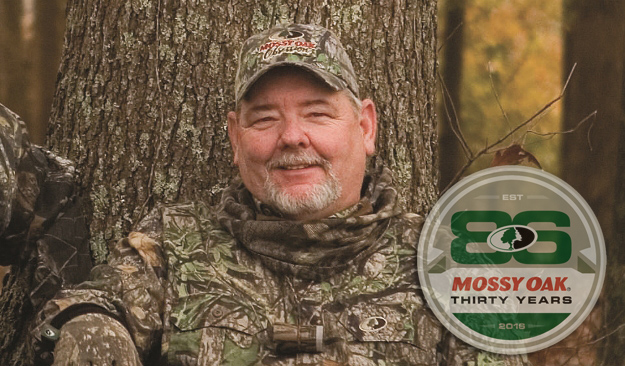Mike Miller Says Colorado’s 2016 Elk Season Has Been Strange But Successful

Editor’s Note: “Can I call you back?” Mossy Oak Pro Mike Miller of Canyon City, Colorado, asked me when I called to interview him for the Mossy Oak website. “I've just finished field dressing and quartering an elk and am putting the meat in game bags. Then I've got to hike back to camp, get some horses, return here, load the meat on the horses and return to camp before daylight.” Miller has been a Mossy Oak Pro for 8 years. For the first 3 weeks in September, he’s been guiding elk and mule deer hunters in Colorado. The next day Miller called us back with the latest report on how Colorado’s 2016 big-game season has gone. From now until the end of elk and mule deer season, Miller will be in the woods every day of the season, except for one or two trips back home to stay for a day or two.
This year has been unusual for archery hunting for elk and mule deer here in Colorado. We've had a lot of rain during the first 1-1/2-weeks of the season, which is good because elk have to have water. However with the rain, we've also had exceptionally-hot weather. Today is the first day we've had our usual cloudy, cool fall day.
 To hunt early-season elk successfully in hot weather in Colorado, you have to study where elk are getting their water. In a normal season, very-few watering holes will have water. However, this year so far, every ditch, creek and drainage is holding water in our section of Colorado. So, the elk are more scattered than they are usually. All this rain we've had has caused the elk not to follow their usual travel routes. But an elk is still an elk and has to feed, water and bed. By paying attention to the signs like tracks, droppings, sightings and an occasional bugle, you can re-pattern the elk, even if their habitat changes. Right now, the elk are spending more time in the aspen timber than they are in the dark timber. In the aspens, they can hide out from the bad weather and the rain.
To hunt early-season elk successfully in hot weather in Colorado, you have to study where elk are getting their water. In a normal season, very-few watering holes will have water. However, this year so far, every ditch, creek and drainage is holding water in our section of Colorado. So, the elk are more scattered than they are usually. All this rain we've had has caused the elk not to follow their usual travel routes. But an elk is still an elk and has to feed, water and bed. By paying attention to the signs like tracks, droppings, sightings and an occasional bugle, you can re-pattern the elk, even if their habitat changes. Right now, the elk are spending more time in the aspen timber than they are in the dark timber. In the aspens, they can hide out from the bad weather and the rain.
Regardless of how much you know about elk, being lucky also plays a major role in a successful elk hunt. So far this season, we've been lucky. Of course, we’re using the spot-and-stalk tactic, but when we see an elk we want to go after, I do a lot of calling. I cow call. Then I’ll change calls to sound like a herd of cows. So far in these 3 weeks of the season, I've been able to pull six bulls within bow range. One of the strange things about early-season bowhunting is that the elk so far have been coming in silent - not bugling- however, yesterday the bulls began to bugle a little bit more.
During early-season bowhunting, I put my hunter 50 to 80 yards in front of me facing the wind. Then when I start calling, I know that the bull, especially a bigger bull, will try to come in and circle the hunter. By having the hunter out in front of me, he should get a better shot at the bull than if he’s sitting beside me. Since the bulls aren’t bugling, we pay much closer attention to every sound we hear. I'm listening for a branch to break, a hoof popping on a rock or antlers breaking timber. I also tell my hunter to really pay attention, because with all the calling I'm doing, then more than likely, we’ll call in more than one bull, and the bulls may come from any direction.
John, when you called me yesterday, the bull that I was field dressing and quartering would score between 300 and 350 Boone & Crockett points - a nice bull. But I'd called in bigger bulls this year for some of my archery hunters. On another hunt, I had a 340-class bull coming in that I could see at 50 yards. However, my hunter couldn’t see the elk, although he could hear him. So, we'd had quite a few close encounters with elk this year. If you’ve ever hunted elk, you know that you have to have an almost perfect hunt with a bow to get an elk within bow range.
For more information about hunting mule deer and/or elk, you can contact Mike Miller at mmiller@mossyoak.com or call him at 719-240-3738.
Tomorrow: Elk, Bears and Hunters Don’t Mix



























